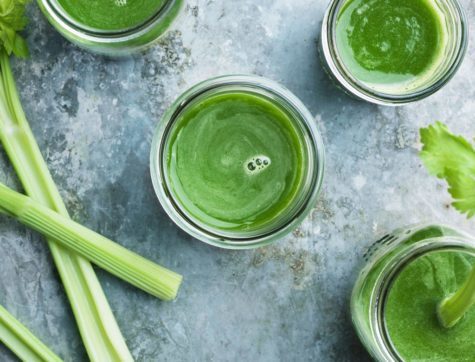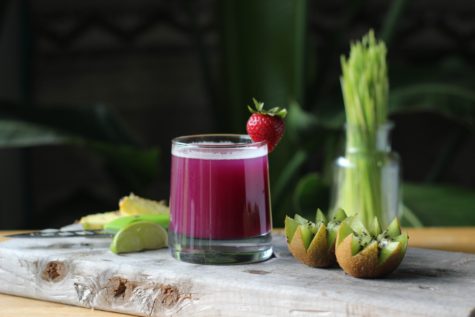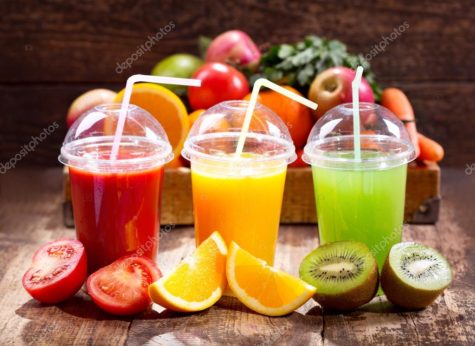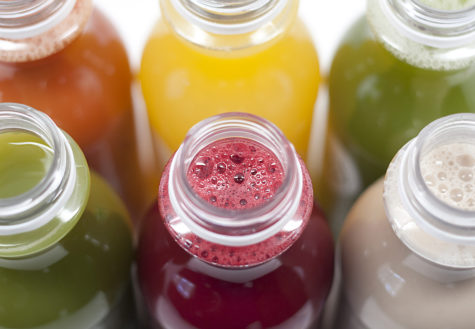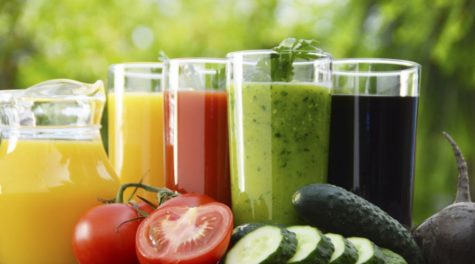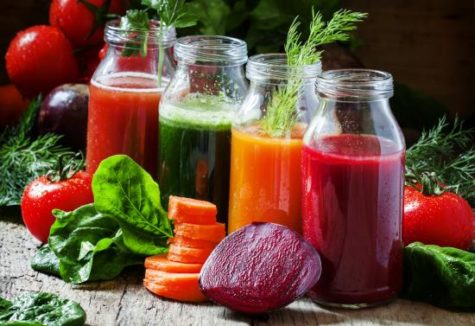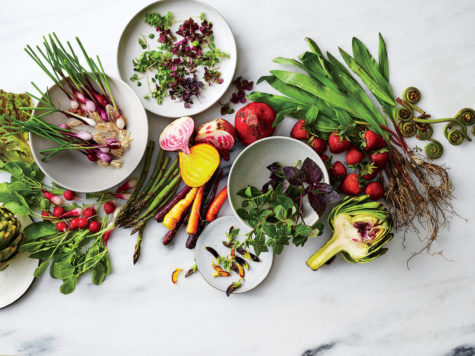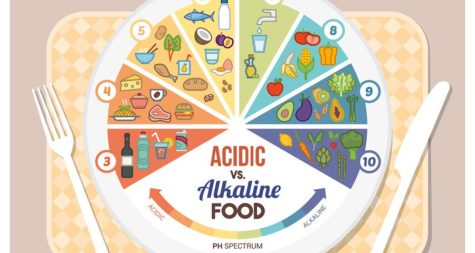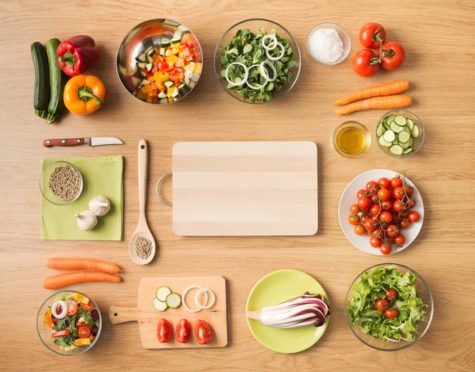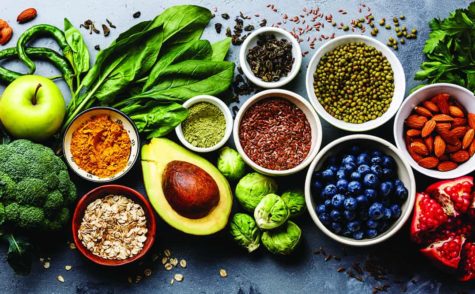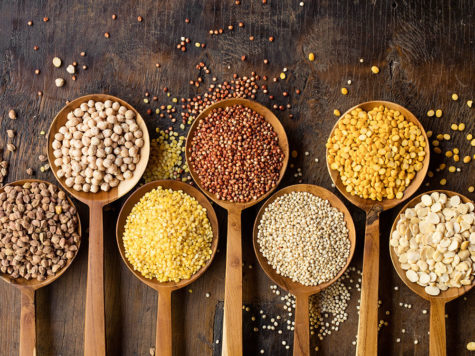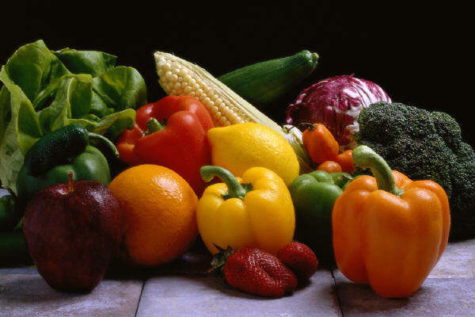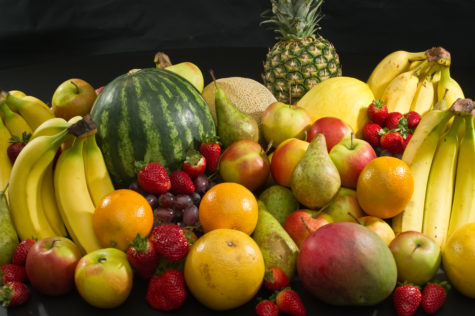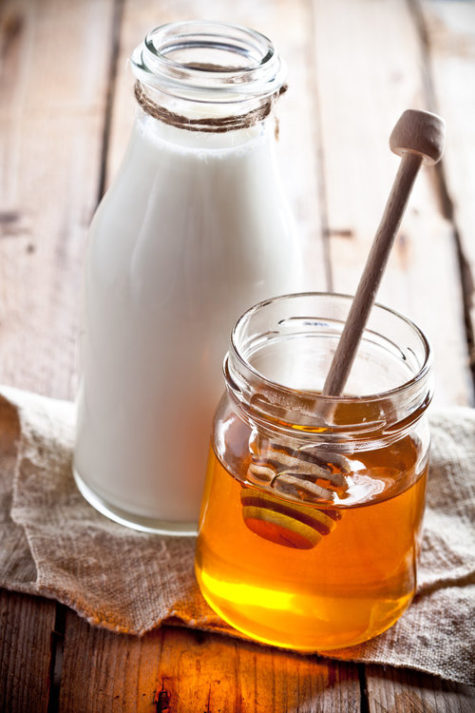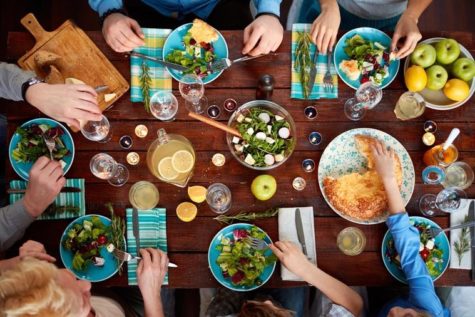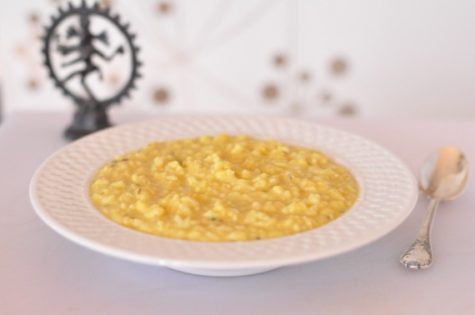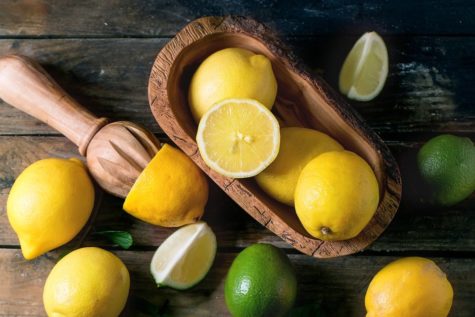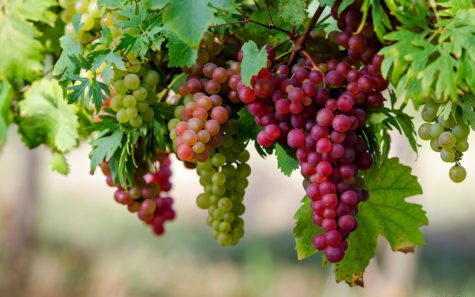Special Diets
Celery Juicing
Celery Juice
Plain, fresh celery juice is one of the most powerful healing juices available to us. This clean, green drink is the very best way to start your day. Make this juice a part of your daily routine and soon you won’t want to go a day without it!”
- Thoroughly rinse one bunch of Celery.
- Run it through a juicer.
- Drink immediately for best results.
- Makes about 16 ounces of juice.
If you don’t have a juicer:
- Chop the celery.
- Blend it in a high-speed blender until smooth.
- Strain well.
Here’s what Anthony William has to say about Celery juice:
Don’t let the simplicity of humble celery mask its strength—it’s often the simplest of measures in life that gracefully work wonders in the most complex situations. I believe that celery juice is a miracle juice and that it’s one of the greatest healing tonics of all time. I’ve seen thousands of people who suffer from chronic and mystery illnesses restore their health by drinking sixteen ounces of celery juice daily on an empty stomach. That’s why, long ago, I started the movement of drinking pure, straight celery juice. Since my books came out sharing the benefits of celery juice even more widely, it’s become a global movement. I want to be sure people know how to use this potent drink correctly and successfully because its healing potential is that tremendous.
Celery juice is most powerful when you drink it solo. While it’s great to consume other green juices or vegetables juices and add in items like spinach, kale, parsley, cilantro, and apples, drink those mixed juices at a different time than your straight celery juice. These blends function differently than what I’m recommending as your greatest tool for recovering your health: pure celery juice taken on an empty stomach.
- Eating vs. Juicing Celery: The Difference
Eating celery stalks, while very healthy and important, is not the same as drinking pure celery juice. When celery is juiced, the pulp (fiber) is removed, and I believe its healing benefits become much more powerful, especially for someone with chronic illness. You’ll also be able to consume far more celery as juice than you would by eating it.
I believe that celery juice also increases and strengthens your bile. Strong bile is important for breaking down fats; it’s also needed to eliminate waste from your body. In Liver Rescue, I share hundreds of what I call Liver Troublemakers, which are the specific chemicals, pollutants, pathogens, foods, and more that contribute to a sluggish liver, causing a wide range of health problems that result in chronic illness.
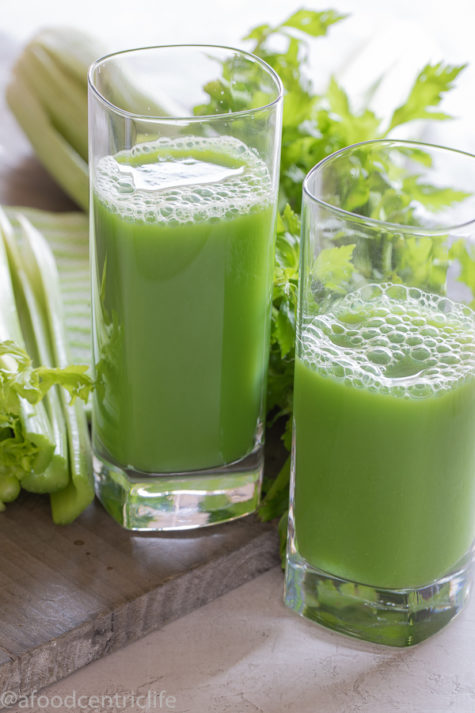
- Celery Juice Tips
Every morning, drink roughly sixteen ounces of celery juice on an empty stomach. Make sure it’s fresh, plain celery juice with no other ingredients. It takes roughly one large bunch of celery to make sixteen ounces of juice. Celery juice is a medicinal drink, not a caloric one, so you’ll still need breakfast afterward to power you through the morning. Simply wait at least fifteen minutes after drinking your celery juice before consuming anything else.
For even greater benefits or if you suffer from a chronic illness or symptom, consider drinking twenty-four to thirty-two ounces of straight celery juice per day. You can drink it all at once in the morning on an empty stomach or split it into two servings as directed below.
If you’re unable to consume your celery juice first thing in the morning before food, then the second-best option is to drink it fifteen to thirty minutes before or after eating something anytime during the day. If you’re having thirty-two ounces a day, you may wish to have it in two sixteen-ounce servings. You can drink the first in the morning on an empty stomach before eating and the second in the late afternoon or early evening, at least fifteen to thirty minutes before eating your next meal.
If you’re sensitive and sixteen ounces is too much, start with a smaller amount, such as two to eight ounces, and increase how much you consume over time. If you’re too sensitive for two ounces, you can try sixteen ounces of straight cucumber juice instead for now. Cucumber juice is very gentle, and you can try celery juice again once you’ve been drinking cucumber juice for a while.
Use organic celery whenever possible. If you’re using conventional celery, be sure to wash it especially well before juicing.
It is best to make celery juice fresh and then drink it immediately. If you’re unable to make your celery juice right before you want to drink it, it’s important to drink it within twenty-four hours of making it. The best way to store the juice is in a glass mason jar with a lid and keep it in the fridge. If you wish, you can also freeze celery juice and drink it as it defrosts. However, I believe the powerful medicinal properties of celery juice will decrease when it’s frozen, so it’s best to drink it fresh whenever possible.
If your mornings are busy, you can save time by rinsing the celery and chopping it (if needed) the night before so it’s ready for you to juice in the morning.
If you find the taste of straight celery juice too strong, you can juice one cucumber and/or one apple with the celery. This is a great option as you get adjusted to the flavor. As you get used to it, keep increasing the ratio of celery; I believe the greatest benefits come when celery juice is consumed on its own. This also means leaving out any lemon, lime, ice, or other added ingredients, all of which change the pure celery juice’s healing benefits. For the best results, think: straight celery. Also, if you find the juice bitter, it may be because of the celery leaves. Some people prefer to leave them on while others prefer to remove them. Both options are great; it’s an individual choice.
Some people may experience a change in their bowel movements when starting to consume celery juice. This is a normal reaction that some individuals may experience. The loose stools will pass as your body heals, and you may notice your bowel movements become more regular and healthier than ever.
Found at: Encyclopedia of Herbology
Raw Juice Therapy
Raw juice therapy is a method of treatment of disease through an exclusive diet of juices of fruits and vegetables. It is also known as juice fasting. It is the most effective way to restore health and rejuvenate the body.
During raw juice therapy, the eliminative and cleansing capacity of the organs of elimination, namely lungs, liver, kidneys and the skin, is greatly increased and masses of accumulated metabolic waste and toxins are quickly eliminated. It affords a physiological rest to the digestive and assimilative organs.
After the juice fasting or raw juice therapy, the digestion of food and the utilization of nutrients is vastly improved. An exclusive diet of raw juices of fruits and vegetables results in much faster recovery from diseases and more effective cleansing and regeneration of the tissues than the fasting on pure water.
Dr. Ragnar Berg, a world-renowned authority on nutrition and biochemistry observes:
“During fasting the body burns up and excretes huge amounts of accumulated wastes. We can help this cleansing process by drinking alkaline juices instead of water while fasting.
I have supervised many fasts and made extensive examinations and tests of fasting patients, and I am convinced that drinking alkali-forming fruit and vegetable juices, instead of water, during fasting will increase the healing effect of fasting. Elimination of uric acid and other inorganic acids will be accelerated. And sugars in juices will strengthen the heart.
Juice fasting is, therefore, the best form of fasting. ”
As juices are extracted from plants and fruits, they process definite medicinal properties. Specific juices are beneficial in specific conditions. Besides specific medicinal virtues, raw fruit and vegetable juices have an extraordinary revitalizing and rejuvenative effect on all the organs, glands and functions of the body.
Favorable Effects
The favorable effect of raw juices in the treatment of disease is attributed to the following facts : Raw juices of fruits and vegetables are extremely rich in vitamins, minerals, trace elements, enzymes and natural sugars. They exercise beneficial effect in normalizing all the body functions. They supply needed elements for the body’s own healing activity and cell regeneration, thereby speeding the recovery.
- The juices extracted from raw fruits and vegetables require no digestion and almost all their vital nutrients are assimilated directly in the bloodstream.
- Raw juices are extremely rich in alkaline elements. This is highly beneficial in normalising acid-alkaline balance in the blood and tissues as there is over-acidity in most conditions of ill-health.
- Generous amounts of easily assimilable organic minerals in raw juices especially calcium, potassium and silicon help in restoring biochemical and mineral balance in the tissues and cells, thereby preventing premature ageing of cells and disease.
- Raw juices contain certain natural medicines, vegetal hormones and antibiotics. For instance, string beans are said to contain insulin-like substance. Certain hormones needed by the pancreas to produce insulin are present in cucumber and onion juices. Fresh juices of garlic , onions, radish and tomatoes contain antibiotic substances.
Precautions
Certain precautions are, however, necessary in adopting an exclusive diet of raw juices. Firstly, all juices should be made fresh immediately before drinking. Canned and frozen juices should not be used. It will be advisable that one should have one’s own juicer for extracting fresh juices.
Secondly, only fresh ripe fruits and vegetables, preferably organically grown, should be used for extraction of juices.
Thirdly, only as much juice as needed for immediate consumption should be extracted. Raw juices oxidize rapidly and lose their medicinal value in storage, even under refrigeration.
Fourthly, the quality of the juices has a distinct bearing on the results obtained. In case of incomplete extraction of juices, their effective power is proportionately reduced due to the absence of the vitamins and enzymes which are left behind in fiber and the pulp.
Finally, if juices are too sweat they should be diluted in water on 50 : 50 basis or mixed with other less sweet juices. This is especially important in some specific conditions such as diabetes, hypoglycemia, arthritis and high blood pressure.
The Six Main Types of Juices
Fruit and vegetable juices may be divided into six main types. These are :
- Juices from sweet fruits such as prunes and grapes
- Juices from sub-acid fruits like apple, plum, pear, peach, apricot and cherry
- Juices from acid fruits like orange, lemon, grapefruit, strawberry and pineapple
- Juices from vegetable fruits, namely, tomato and cucumber
- Juices from green leafy vegetables like cabbage, celery, lettuce, spinach, parsley and watercress
- Juices from root vegetables like beetroot, carrot, onion, potato and radish. Generally speaking, fruit juices stir up toxins and acids in the body, thereby stimulating the eliminative processes.
Vegetable juices, on the other hand, soothe the jaded nerves and work in a much milder manner. They carry away toxic matter in a gentle way. Owing to their differing actions fruit and vegetable juices should not be used at the same time or mixed together. It is desirable to use juices individually. In any case not more than three juices should be used in any one mixture.
Rules For Mixing Juices
The following broad rules apply when using mixtures of juices. Juices from sweet fruits may be combined with juices of sub-acid fruits, but not with those of acid fruits, vegetable fruits or vegetables.
- Juices from sub-acid fruits may be combined with juices of sweet fruits, or acid fruits, but not with other juices.
- Juices from acid fruits may be combined with those of sub-acid fruits or vegetable fruits, but not with other juices.
- Juices from vegetable fruits may be combined with those of acid fruits or of green leafy vegetables, but not with other juices.
- Juices from green leafy vegetables may be combined with those of vegetable fruits or of the root vegetable, but not with other juices.
- Juices from root vegetables may be combined with those of green leafy vegetables, but not with other juices. A proper selection of juices in treating a particular ailment is very essential.
Thus, for instance, juices of carrot, cucumber, cabbage and other vegetables are very valuable in asthma, arthritis and skin disease, but juices of orange and mosambi aggravate their symptoms by increasing the amount of mucus.
Treatment of Diseases
Some common ailments and fruit and vegetable juices found beneficial in their treatment are mentioned below :
- Acidity : Grapes, orange, mosambi, carrot and spinach.
- Acne : Grapes, pear, plum, tomato, cucumber, carrot, potato and spinach.
- Allergies : Apricot, grapes, carrot, beet and spinach.
- Arteriosclerosis : Grapefruit, pineapple, lemon, celery, carrot, lettuce, and spinach.
- Anemia : Apricot, prune, strawberry, red grape, beet, celery, carrot and spinach.
- Arthritis : Sour cherry, pineapple, sour apple, lemon, grapefruit, cucumber, beet, carrot, lettuce and spinach.
- Asthma : Apricot, lemon, pineapple, peach, carrot, radish and celery.
- Bronchitis : Apricot, lemon, pineapple, peach, tomato, carrot, onion and spinach.
- Bladder Ailments : Apple, apricot, lemon, cucumber, carrot, celery, parsley and watercress.
- Colds : Lemon, orange, grapefruit, pineapple, carrot, onion, celery and spinach.
- Constipation : Apple, pear, grapes, lemon, carrot, beet, spinach and watercress.
- Colitis : Apple, apricot, pear, peach, pineapple, papaya, carrot, beet, cucumber and spinach.
- Diabetes : Citrus fruits, carrot, celery, lettuce and spinach.
- Diarrhea : Papaya, lemon, pineapple, carrot and celery.
- Eczema : Red grapes,carrot, spinach, cucumber and beet.
- Epilepsy : Red grapes, figs, carrot, celery and spinach.
- Eye Disorders : Apricot ,tomato, carrot, celery, parsley and spinach.
- Gout : Red sour cherries, pineapple, tomato, cucumber, beet, carrot, celery and spinach.
- Halitosis : Apple, grapefruit, lemon, pineapple, tomato, carrot, celery and spinach.
- Headache : Grapes, lemon, carrot, lettuce and spinach.
- Heart Disease : Red grapes, lemon, cucumber, carrot, beet and spinach.
- High blood pressure : Grapes, orange, cucumber, carrot and beet.
- Influenza : Apricot, orange, lemon , grapefruit, pineapple, carrot, onion and spinach.
- Insomnia : Apple, grapes, lemon, lettuce , carrot and celery.
- Jaundice : Lemon, grapes, pear, carrot, celery, spinach, beet and cucumber.
- Kidney Disorders : Apple, orange, lemon, cucumber, cucumber,carrot, celery, parsley and beet.
- Liver ailments : Lemon, papaya, grapes, carrot, tomato, beet and cucumber.
- Menstrual Disorders :Grapes, prunes, cherry, spinach, lettuce turnips and beet.
- Menopausal Symptoms : Fruits and Vegetables in season.
- Neuritis : Orange, pineapple, apple, carrot and beet.
- Obesity : Lemon, grapefruit, orange, cherry, pineapple, papaya, tomato, beet, cabbage, lettuce, spinach and carrot.
- Piles : Lemon, orange, papaya, pineapple, carrot, spinach, turnip and watercress.
- Prostate Troubles : All fruit juices in season, carrot, asparagus, lettuce and spinach.
- Psoriasis : Grapes, carrot, beet, and cucumber.
- Rheumatism : Grapes, orange, lemon, grapefruit, tomato, cucumber, beet, carrot and spinach.
- Stomach Ulcers : Apricot, grapes, cabbage and carrot.
- Sinus Trouble : Apricot, lemon, tomato, carrot, onion and radish.
- Sore Throat : Apricot, grapes, lemon, pineapple, prune, tomato, carrot and parsley.
- Tonsillitis : Apricot, lemon, orange, grapefruit, pineapple, carrot, spinach and radish.
- Varicose Veins : Grapes, orange, plum, tomato, beetroot carrot and watercress.
When on a raw juice therapy, the prescribed juice should be drunk every three hours. One can thus take juices five to six times a day. A glass of water mixed with lemon juice and 20 to 30 grams of honey may be taken first thing in the morning on arising. Thereafter, the prescribed juice may be taken at three-hourly intervals.
The quantity of juice on each occasion may be 250 ml on the first day. This quantity may be increased by 50 ml each succeeding day till one takes 600 ml on each occasion. The juice diet can be continued for 30 to 40 days without any ill-effects.
The patient should take adequate rest during the raw juice therapy. Raw juices act as a cleansing agent and start eliminating toxins and morbid matter from the system immediately. This often results in symptoms such as pain in the abdomen, diarrhea, loss of weight, headache, fever, weakness, sleeplessness and bad breath.
These reactions, which are part of the cleansing process, should not be suppressed by the use of drugs. They will cease when the body is able to expel all toxins. After the raw juice therapy, the return to normal balanced diet should be gradual, and in stages. In the beginning, two juice meals may be replaced by milk and fruits. Then gradually juice meals may be substituted by a balanced-diet.
Health Promotion the Vegetarian Way
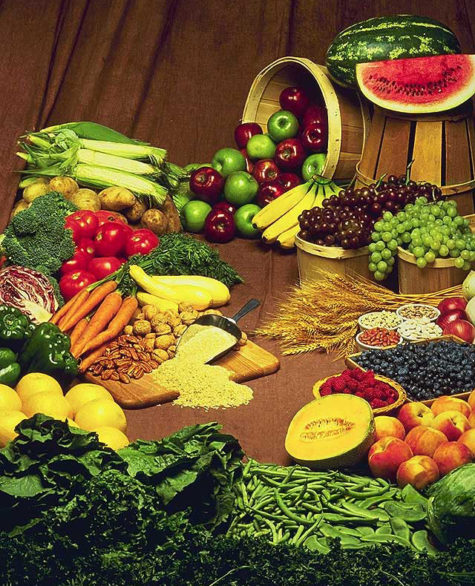
The word ” Vegetarian ” was coined by the Vegetarian Society of the United Kingdom in about 1847. The word does not come from vegetable as is generally assumed : It is a derivation of the Latin word ‘ vegetari ‘ which means to enliven.
The practice of vegetarianism, however, goes far back in history. Many noted philosophers and religious teachers urged their followers to avoid a flesh diet. Brahminism, Jainism, Zoraostrianism and Buddhism acknowledged the sacredness of life and the need to live without causing suffering; so did many of the early Christians.
There are various types of vegetarians. ” Vegans “are the strictest vegetarians who eat only plant foods and exclude all animal by-products such as eggs, milk, cheese, curd, butter, ghee and even honey. There are ” lacto vegetarians ” who eat plant foods as well as dairy products and ” lacto-avo vegetarians ” who eat eggs besides plant foods and dairy products. There are even fish-eating vegetarians. The common factor among them is that they do not eat the flesh of warm- blooded animals.
Meat seems to have assumed an exaggerated importance nutritionally. It is generally mistakenly believed that nutritional deficiencies , especially of proteins and vitamin B12 and poor health may result if animal foods are eliminated. Studies however, have indicated to health problems or deficiency diseases for those on a vegetarian diet.
Of the 22 amino acids -the essential components of proteins – needed by the body for its normal functioning, only nine need be supplied by the diet as the body synthesizes the remaining 13. The body can use 100 per cent of this protein if all ten amino acids are in ideal proportions. If, however, one or more of the essential amino acids are present in less than the ideal amount, the value of the entire protein is reduced in the same proportions. On a quality rating scale of 1 to 100, egg protein is 95, milk is 82, meat and poultry are 67, fish 80, grains are between 50 to 70 and legumes, nuts and seeds are between 40 and 60.
The so-called protein deficiency in a vegetarian diet is in fact more imaginary than real as the contribution of the protein value of the green vegetables has been ignored and the true protein requirement is less than that assumed. Green vegetable protein is as high in quality as milk protein and thus makes a very valuable contribution to the vegetarian’s protein nutrition. The high quality of protein balances the lower quality of other vegetarian proteins such as nuts and beans.
The recommended daily allowance of 70 value proteins is 44 grams per day for women and 56 for men. Researchers have now discovered that the actual protein requirement is much less, being 15 grams per day of 100 value protein or 21.5 grams of 70 value protein or 30 grams of 50 value protein. A wholesome vegetarian diet can, therefore, easily meet the body’s protein needs.
Moreover, it is possible to combine two low-value plant proteins to get a protein of higher quality. Thus, wheat which has a deficiency in the amino-acid lysine but an abundance of sulphur containing amino-acids can be combined with beans which have the opposite enrichment combination. Taken together, they complement each other to form a complete protein.
As regards the adequacy of B12 nutrition, laco-avo vegetarians and lacto-vegetarians should not feel concerned on this score, as the B12 needs can be easily supplied by dairy products and eggs. A quarter liter of milk or 100 grams of cheese or 1 egg per day will supply the recommended daily allowance. This vitamin once eaten is stored in the liver. Vegans, however, do not get this vitamin in their food, yet reliable scientific studies have found no evidence of B12 deficiency diseases. It is therefore, presumed that this vitamin can be synthesized in the body.
Auto-Intoxication
Most diseases of the human body are caused by auto-intoxication or self-poisoning. The flesh of animals increases the burden of the organs of elimination and overloads the system with animal waste matter and poisons. Chemical analysis has proved that uric acid and other uremic poisons contained in the animal body are almost identical to caffeine, there and nicotine, the poisonous stimulating principles of coffee, tea and tobacco. This explains why meat stimulates the animal passions and creates a craving for liquor, tobacco and other stronger stimulants.
Excessive uric acid resulting from meat-eating also causes diseases such as rheumatism, Bright’s disease, kidney stones, gout and gall stones. Meat proteins cause putrefaction twice as rapidly as do vegetable proteins. The morbid matter of the dead animal body is foreign and uncongenial to the excretory organs of man. It is much harder for them to eliminate the waste matter of an animal carcass than that of the human body. Moreover, the formation of ptomains or corpse poisons begins immediately after the death of the animal and meat and poultry are usually kept in cold storage for many days and even months before they reach the kitchen.
Another powerful influence tends to poison the flesh of slaughtered animals. As is well known, emotions of worry, fear and anger actually poison blood and tissues. Imagine the excitable condition of animals after many days of travel, closely packed in shaking vehicles – hungry, thirsty, scared en route to the slaughter -houses. Many die even before the end of their journey. Others are driven half dead with fear and exhaustion to the slaughter pans, their instinctive fear of death augmented by the sight and odor of the blood shambles.
Flesh is often a carrier of disease germs. Diseases of many kinds are on the increase in the animals, making flesh foods more and more unsafe. People are continually eating flesh that may contain tuberculosis and cancerous germs. Often animals are taken to the market and sold for food when they are so diseased that their owners do not wish to keep them any longer. And some of the processes of fattening them to increase their weight and consequently their market value, produce disease. Shut away from light and pure air, breathing the atmosphere of filthy stables, perhaps fattening on decaying foods, the entire body now becomes contaminated with foul matter.
Benefits of Vegetarianism
A vegetarian diet can have many nutritional benefits, if it is rich in fruits and vegetables, and contains moderate amounts of seeds, nuts, whole grains and legumes. One of the main benefits of a proper vegetarian diet is its low caloric content in relation to the bulk supplied, which helps maintain ideal weight.
Another benefit of the vegetarian diet is the much lower intake of fat, if dairy products, seeds and nuts are eaten sparingly. This accounts for lower serium cholesterol levels found in vegetarians, which considerably reduces the risk of developing heart diseases and breast and colon cancer.
A third nutritional advantage of the vegetarian diet is its high fiber content. Fiber, being indigestible, increases the bulk of the faces, keeps them soft and makes them easy to expel. One study has indicated that lacto-avo vegetarians consume twice as much and vegans four times as much fiber as non-vegetarians. High fiber intake has been associated with decreased risks of diseases of the colon, appendicitis, cancer of the colon and rectum, hiatus hernia, piles and varicose veins.
McCarrison, one of the greatest authorities on food, has outlined a perfect diet. According to him:
” a perfectly constituted diet is one in which the principal ingredients are milk, milk products, any whole cereal grain or mixture of cereal grains, green leafy vegetables and fruits. These are the protective foods. They make good the defects of other constituents of the diet, protect the body against infection and disease of various kinds, and their use in sufficient quantity ensures physical efficiency. ”
Vegetarianism is thus a system based on scientific principles and has proved adequate for the best nutrition free from the poisons and bacteria of diseased animals. It is the best diet for man’s optimum, physical, mental and spiritual development.
Miracles of an Alkalizing Diet
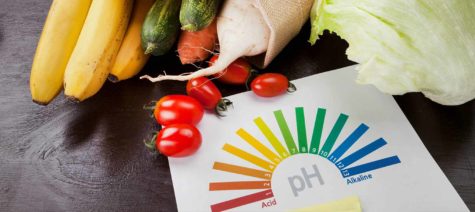
The human body is composed of various organs and parts, which are made up of tissues and cells. These tissues and cells are composed of 16 chemical elements. The balance or equilibrium of these chemical elements in the body is an essential factor in the maintenance of health and healing of disease. The acid-alkaline balance plays a vital role in this balanced body chemistry.
All foods, after digestion and absorption leave either an acid or alkaline ash in the body depending on their mineral composition. The normal body chemistry is approximately 20 per cent acid and 80 per cent alkaline. This is the acid-alkaline balance. In normal health, the reaction of the blood is alkaline and that is essential for our physical and mental well-being.
The preponderance of alkali in the blood is due to the fact that the products of the vital combustion taking place in the body are mostly acid in character. Carbohydrates and fats form about nine-tenths of the normal fuel of the body.
In normal health, this great mass of material is converted into carbon dioxide gas and water. Half of the remaining one-tenth fuel is also converted into the same gas and water. This huge amount of acid is transported by the blood to the various points of discharge, mainly the lungs. By virtue of alkalinity, the blood is able to transport the acid from the tissues to the discharge points.
Acidosis
Whenever the alkalinity of the blood is reduced, even slightly, its ability to transport the carbon dioxide gets reduced. This results in the accumulation of acid in the tissues. This condition is known as acidosis or hypo-alkalinity of the blood. Its symptoms are hunger, indigestion, burning sensation and pain in the pharynx, nausea, vomiting, headache, various nervous disorders and drowsiness.
Acidosis is the breeding ground for most diseases. Nephritis or Bright’s disease, rheumatism, premature old age, arteriosclerosis, high blood pressure, skin disorders and various degenerative diseases are traceable to this condition. It seriously interferes with the functions of the glands and organs of the body. It also lowers the vitality of the system, thereby increasing the danger of infectious diseases.
The main cause of acidosis or hypo-alkalinity of the blood is faulty diet, in which too many acid forming foods have been consumed. In the normal process of metabolism or converting the food into energy by the body, various acids are formed in the system and in addition, other acids are introduced in food. Whenever there is substantial increase in the formation of acids in the system and these acids are not properly eliminated through the lungs, the kidneys and the bowels , the alkalinity of the blood is reduced, resulting in acidosis.
Other causes of acidosis are depletion of alkali reserve due to diarrhea, dysentery, cholera etc., accumulation of carbon dioxide in asphyxia and anoxia as in circulatory and pulmonary diseases and accumulation of acetone bodies resulting from starvation, vomiting and diabetes mellitus.
Acidosis can be prevented by maintaining a proper ratio between acid and alkaline foods in the diet. Certain foods leave alkaline ash and help in maintaining the alkalinity of the food, while others leave highly acid ash and lower the alkali reserve of the blood and tissue fluids to a very large extent. Eggs do the same but less strongly than meats. Cereals of all kinds, including all sorts of breads are also acid-forming foods , though much less than meats.
All fruits, with exceptions like plums and prunes and all green and root vegetables are highly alkaline foods and help to alkalinize the blood and other tissue fluids. Thus, our daily diet should consist of four-fifth of alkaline-forming foods such as juicy fruits, tubers, legumes, ripe fruits, leafy and root vegetables and one fifth of acid-forming foods containing concentrated proteins and starches such as meat, fish, bread and cereals.
Eating sensibly in this manner will ensure the necessary alkalinity of the food which will keep the body in perfect health. Whenever a person has acidosis, the higher the ratio of alkaline forming foods in his diet, the quicker will be the recovery. Acids are neutralized by alkali. It is, therefore, imperative that persons suffering from various ailments are given adequate alkaline ash foods to offset the effects of acid-forming foods and leave a safe margin of alkalinity.
The most agreeable and convenient means of alkalizing the blood are citrus fruits and fruit juices. The alkalizing value of citrus fruits are due to large percentage of alkaline salts, mainly potash, which they contain. Each pint of orange juice contains 12 grains of potassium, one of the most potent of alkalis. Lemon juice contains nine grains of the alkali to the pint and grape seven grains.
Diet in Disease
In the diet during disease, breakfast may consist of fresh fruits, lunch may comprise raw vegetables with acid and sub-acid fruits, and for dinner raw and cooked vegetables, or light starchy vegetables like beet, carrot, cauliflower, egg-plant and squashes may be taken. Sweet fruits may be added to this diet after seven days.
Foods are classified as acid-producing or alkaline-producing depending on their reaction on the urine. Calcium, magnesium, sodium and potassium present in foods contribute to the alkaline effect, while sulfur, phosphorous and chlorine contribute to the acidic effect.
Depending on the predominating constituents in a particular food, it is classified as acid-forming or alkaline-forming. The effect of food stuffs upon the alkalinity of the blood depends upon their residue which they leave behind after undergoing oxidation in the body.
It is an error to presume that because a food tastes acid, it has an acidic reaction in the blood. For instance, fruits and vegetables have organic acids in combination with soda and potash in the form of acid salts. When the acids are burnt or utilized in the body, the alkaline soda or potash is left behind. Hence the effect of the natural fruit acids is to increase the alkalinity of the blood rather than reduce it.
Based on the above observations, the following charts show the common foods with acid and alkaline ash :
Foods Leaving An Acid Ash
The following foods are best if limited to one fifth of your total diet.
- Bananas (unripe)
- Barley
- Beans
- Bread
- Cakes
- Cereals
- Chicken
- Chocolate
- Coffee
- Confections
- Corn
- Eggs
- Grain Foods
- Lentils
- Meats
- Nuts except almonds
- Oatmeal
- Peas
- Rice
- Sea Foods
- Sugar
- Tea
Foods Leaving An Alkaline Ash
The following foods should take up about four-fifths of your total diet.
- Apricots
- Almonds
- Apples
- Banana (ripe)
- Beets
- Cabbage
- Carrots
- Cauliflower
- Celery
- Coconuts
- Cottage Cheese
- Cucumbers
- Dates
- Figs ( Fresh and Dry)
- Grapes
- Lemons
- Lettuce
- Melons
- Milk
- Onions
- Oranges
- Parsley
- Peaches
- Pears
- Pineapple
- Potatoes
- Pumpkins
- Radishes
- Raisins
- Soy beans
- Spinach
- Tomatoes
- Turnips
Optimum Nutrition for Vigour and Vitality
Your food shall be your medicine.
– Hippocrates
Diet plays a vital role in the maintenance of good health and in the prevention and cure of disease. In the words of Sir Robert McCarrison, one of the best known nutritionists, ‘The right kind of food is the most important single factor in the promotion of health ; and the wrong kind of food is the most important single factor in the promotion of disease. ”
The human body builds up and maintains healthy cells, tissues, glands and organs only with the help of various nutrients. The body cannot perform any of its functions, be they metabolic, hormonal, mental, physical or chemical, without specific nutrients. The food which provides these nutrients is thus one of the most essential factors in building and maintaining health. Nutrition, which depends on food, is also of utmost importance in the cure of disease.
The primary cause of disease is a weakened organism or lowered resistance in the body, arising from the adoption of a faulty nutritional pattern. There is an elaborate healing mechanism within the body but it can perform its function only if it is abundantly supplied with all the essential nutritional factors.
It is believed that at least 45 chemical components and elements are needed by human cells. Each of these 45 substances, called essential nutrients, must be present in adequate diets. The list of these nutrients, include oxygen and water. The other 43 essential nutrients are classified into five main groups, namely carbohydrates, fats, proteins, minerals and vitamins. All 45 of these nutrients are vitally important and they work together. Therefore, the absence of any of them will result in disease and eventually in death.
Research has shown that almost all varieties of disease can be produced by an under-supply of various nutrients. These nutritional deficiencies occur on account of various factors, including the intense processing and refining of foods, the time lag between the harvesting and consumption of vegetables and fruits, the chemicals used in bleaching, flavoring, coloring and preserving foods and the chemical fertilizers, fungicides insecticides and sprays used for treating the soil.
Therefore, as a first principle of nutrition, one should insist upon whole meal flour and whole meal bread and avoid the white stuff. Research has also shown that diseases produced by combinations of deficiencies can be corrected when all the nutrients are supplied, provided irreparable damage has not been done. A well-balanced and correct diet is thus of utmost importance for the maintenance of good health and the healing of diseases. Such a diet, obviously should be made up of foods, which in combination would supply all the essential nutrients.
It has been found that a diet which contains liberal quantities of seeds, nuts, and grains, vegetables and fruits, would provide adequate amounts of all the essential nutrients. These foods have, therefore, been aptly called basic food groups and the diet contains these food groups as optimum diet for vigor and vitality. It is described, in brief, below:
Seeds, nuts and grains :
These are the most important and the most potent of all foods and contain all the important nutrients needed for human growth. They contain the germ, the reproductive power which is of vital importance for the lives of human beings and their health.
- Millet, wheat, oats, barley, brown rice, beans and peas are all highly valuable in building health.
- Wheat, mung beans, alfalfa seeds and soy beans make excellent sprouts.
- Sunflower seeds, pumpkin seeds, almonds, peanuts and soy beans contain complete proteins of high biological value.
Seeds, nuts and grains are also excellent natural sources of essential unsaturated fatty acids necessary for health. They are also good sources of lecithin and most of the B vitamins. They are the best natural sources of vitamin C, which is perhaps the most important vitamin for the preservation of health and prevention of premature ageing. Besides, they are rich sources of minerals and supply necessary bulk in the diet.
They also contain auxones, the natural substance that play an important role in the rejuvenation of cells and prevention of premature ageing.
Vegetables :
They are extremely rich source of minerals, enzymes and vitamins. Faulty cooking and prolonged careless storage, however, destroy these valuable nutrients. Most of the vegetables are, therefore, best consumed in their natural raw state in the form of salads.
There are different kinds of vegetables. They may be edible roots, stems, leaves, fruits and seeds. Each group contributes to the diet in its own way. Fleshy roots have energy value and good sources of vitamin B. Seeds are relatively high in carbohydrates and proteins and yellow ones are rich in vitamin A. Leaves, stems and fruits are excellent sources of minerals, vitamins, water and roughage.
To prevent loss of nutrients in vegetables, it would be advisable to steam or boil vegetables in their juices on a slow fire and the water or cooking liquid should not be drained off. No vegetable should be peeled unless it is so old that the peel is tough and unpalatable. In most root vegetables, the largest amount of mineral is directly under the skin and these are lost if vegetables are peeled. Soaking of vegetables should also be avoided if taste and nutritive value are to be preserved.
Fruits :
Like vegetables, fruits are an excellent source of minerals, vitamins and enzymes. They are easily digested and exercise a cleansing effect on the blood and digestive tract. They contain high alkaline properties, a high percentage of water and a low percentage of proteins and fats. Their organic acid and high sugar content have immediate refreshing effects. Apart from seasonable fresh fruits, dry fruits, such as raisins, prunes and figs are also beneficial.
Fruits are at their best when eaten in the raw and ripe states. In cooking, they lose portions of the nutrient salts and carbohydrates. They are most beneficial when taken as a separate meal by themselves, preferably for breakfast in the morning. If it becomes necessary to take fruits with regular food, they should form a larger proportion of the meals.
Fruits, however, make better combination with milk than with meals. It is also desirable to take one kind of fruit at a time. For the maintenance of good health, at least one pound of uncooked fruits should form part of the daily diet. In case of sickness, it will be advisable to take fruits in the form of juices.
Milk, oil and honey:
The three basic health-building foods mentioned above should be supplemented with certain special foods such as milk, vegetable oils and honey. Milk is an excellent food. It is considered as ” Nature’s most nearly perfect food.” The best way to take milk is in its soured form – that is, yogurt and cottage cheese. Soured milk is superior to sweet milk as it is in a predigested form and more easily assimilated. Milk helps maintain a healthy intestinal flora and prevents intestinal putrefaction and constipation.
High quality unrefined oils should be added to the diet. They are rich in unsaturated fatty acids, vitamin C and F and lecithin. The average daily amount should not exceed two tablespoons.
Honey too is an ideal food. It helps increase calcium retention in the system, prevents nutritional anemia besides being beneficial in kidney and liver disorders, colds, poor circulation and complexion problems. It is one of the nature’s finest energy-giving food.
Daily Menu
A diet of the three basic food groups, supplemented with the special foods, mentioned above, will ensure a complete and adequate supply of all the vital nutrients needed for health, vitality and prevention of diseases. It is not necessary to include animal protein like egg, fish or meat in this basic diet, as animal protein, especially meat, always has a detrimental effect on the healing process. A high animal protein is harmful to health and may cause many of our common ailments.
Based on what has been stated above, the daily menu of a health-building and vitalising diet should be on the following lines :
- Upon arising :
A glass of lukewarm water mixed with the juice of a half a lemon and a teaspoon of honey, or a glass of freshly squeezed juice of any available seasonable fruit such as apple, pineapple, orange, sweet lime and grapes.
- Breakfast :
Fresh fruits such as apple, orange, banana, grapes, or any available seasonal fruits, a cup of butter-milk or unpasteurized milk and a handful of raw nuts or a couple of tablespoons of sunflower and pumpkin seeds.
- Mid-morning snack :
One apple or a banana or any other fruit.
- Lunch :
A bowl of freshly prepared steamed vegetables using salt, vegetable oil and butter for seasoning, one or two slices of whole grain bread or chapatis and a glass of butter-milk.
- Mid-afternoon :
A glass of fresh fruit or vegetable juice or any available fruit.
- Dinner :
A large bowl of fresh salad made up of green vegetables, such as tomatoes, carrot, cabbage, cucumber, red beet and onion with lime juice dressing, any available sprouts such as alfalfa seeds, and mung beans , a warm vegetable course, if desired, one tablespoon of fresh butter, cottage cheese or a glass of butter-milk.
The above menu is a general outline around which an individual diet can be built. It can be modified and changed to adopt to specific requirements and conditions. The menu for lunch and dinner is interchangeable. Do not drink liquids with meals. The water should be taken half an hour before meals or an hour after meals. Milk, buttermilk, and vegetable soups are foods and can be taken with meals.
A Kitchari Fast
In Ayurveda, the ancient wisdom of India dating back 5,000 years, this mix of rice and mung beans is considered extremely easy to digest and is said to purify the digestion and cleanse the body of toxins. Ayurvedic physicians often prescribe a kitchari diet before, during, and after panchakarma, a rejuvenative treatment that cleanses toxins stored in bodily tissues as it restores systemic balance.
Kitchari provides solid nourishment while allowing the body to devote energy to healing. You can safely subsist on kitchari anytime in order to build vitality and strength as it helps balance all three doshas. For restless vata, the warm soup is grounding; for fiery pitta, its spices are calming; and for chilly kapha, it provides healing warmth.
According to Vasant Lad, in his book, The Complete Book of Ayurvedic Home Remedies, “A five-day kitchari fast, using plain kitchari with just some chopped cilantro leaves added, will cleanse the system and help to strengthen memory.”
Kitchari fasting is actually a mono-diet, which means the body receives a limited diversity of foodstuffs and therefore needs to produce a limited number of digestive enzymes. The work of the digestive system is lessened, allowing for greater healing and cleansing to occur. A kitchari cleanse can be calming, soothing and warming.
Kitchari tastes like a cross between a creamy rice cereal and a light dal, or lentil soup. If it is a cold, blustery day or you are feeling under the weather, a steaming bowl of this classic Indian comfort food can both warm up your bones and restore sagging energy. Everyone has his or her own special method of making kitchari. Ayurvedic Cooking for Self Healing offers a half-dozen kitchari recipes, including this one found on Yoga Journal:
Ingredients:
- 1 cup split yellow mung beans
- 1 tbsp peeled, chopped fresh ginger
- 2 tbsp shredded coconut
- handful chopped cilantro
- 1/2 cup water
- 1/2 tsp cinnamon
- 1/4 tsp each of cardamom, pepper, clove powder, turmeric, salt
- 3 bay leaves
- 3 tbsp ghee or butter
- 1 cup raw basmati rice
- 6 cups water
Directions:
First, rinse the mung beans and soak for several hours. Set aside. In a blender, liquefy the peeled, chopped ginger, shredded coconut, chopped cilantro with one-half cup of water. In a large saucepan, lightly brown the spices, salt; and bay leaves (remove before serving) in the ghee, or butter.
Drain the beans and then stir them into the spice mixture in the saucepan. Next, add the basmati rice. Stir in the blended spice and coconut mixture, followed by six cups of water. Bring to a boil, cover, and cook on low heat for approximately 25 to 30 minutes until soft.
Master Cleanse – Lemon Diet
Daniel and I are going to try this diet. It’s supposed to work wonders for your body, clearing and detoxing, and giving you a fresh new start.
Here’s the Lemon Drink recipe for a Master Cleanse
- 2 tablespoons FRESH squeezed lemon or lime juice (approx. 1/2 lemon)
- 2 tablespoons genuine organic maple syrup, Grade B (the darker the better)
- 1/10 teaspoon (a small pinch!) cayenne pepper, gradually increase (the more BTUs the better)
- 10-14 oz pure water
Important notes:
- Use fresh lemons or limes only, never canned or frozen lemon juice (organic, vine ripened – if possible).
- Use only real (and organic, if possible) grade B or C maple syrup. (Don’t use Grade A maple syrup or maple-flavored syrup. They are over-refined, which means that they are mostly refined sugars and lack essential minerals.)
- It’s best to make each drink fresh, but if that is not possible (or practical) you can make a larger batch to drink throughout the day. Just be sure to make it fresh each morning.
For larger batches, in a 2 liter bottle mix together the following:
- Juice of 3 lemons
- 6 oz of grade B or C maple syrup
- 1/4 tsp of cayenne (or more)
- Spring or purified water (fill bottles to the top)
- Mix all the ingredients by thoroughly shaking
Wish us luck! I think we’re going to need it!
The End of All Diets
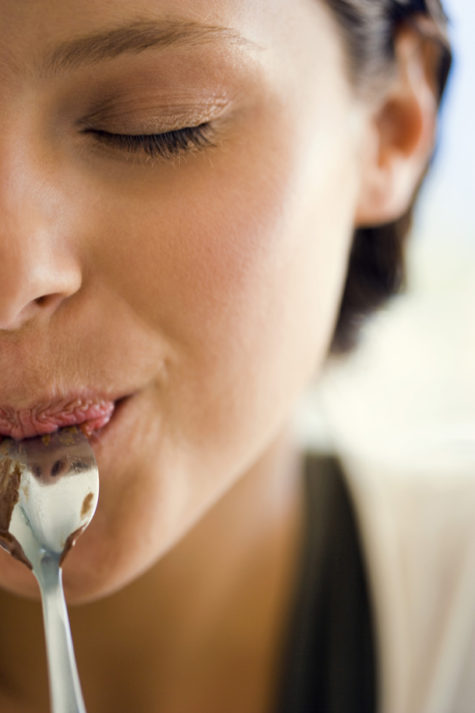
Our tendency is to eat automatically, robot-like. If the taste is not lived, we are just stuffing. Go slow and be aware of the taste. Only when you go slow can you be aware. Taste the food unhurriedly and become the taste. When you feel sweetness, become the sweetness. Then it can be felt all over the body, spreading in ripples.
When and Where:
Whatsoever and whenever you are eating, feel the taste and become the taste. When drinking water, feel the coolness. Close your eyes, drink it slowly, taste it.
Benefits:
With this technique your sensitivity grows, and you become more alive and more filled. Stuffing disappears as the whole of your body feels
filled. The more sensitive you are the more alive you are. When you are more alive, more life will enter your inner being. You will be more open.
Source: Pragito Dove
The Easy Grape Cure
Dr. Johanna Brandt wrote the classic book The Grape Cure in 1926 describing in detail how she cured herself of a particularly aggressive form of stomach cancer. Johanna tells how years of fasting had had no effect on the cancer and the book sets out the full protocol of the diet based purely on grapes that finally cured her in only six weeks. She lived another 40 years, well into her eighties, completely cancer free. The book also goes on to describe how five terminally ill patients in a New York hospital were all cured along with many other case histories.
Eat the Fruit not the Supplement
Science has since backed up the extraordinary medicinal effects of grapes with several discoveries of particular substances which have been shown to have far reaching health effects on the body. These are easily researched and many extracts are now available as supplements but I am a firm believer in obtaining as natural a source as possible, from the original fruit, herb or vegetable because the synergistic value of the combined properties of the whole far outweighs isolated extracts as far as integration and absorption are concerned.
The Easy Grape Cure is an excellent detoxification program which can be undertaken as often as required to cleanse the whole system. She has recommended this regime to hundreds of people and so far reports have included:
Multiple Benefits of The Cure:
- Increased mobility and relief from swelling and pain in cases of arthritis and rheumatoid arthritis
- Reduction in allergic responses to many common foods
- Better quality of sleep
- Increased energy
- Effortless weight loss
- Increased libido
- Thickening of hair
- Relief of PMT and menopausal symptoms such as hot flushes, mood swings and many indicators of hormonal imbalances
- Hemorrhoid relief
- Swifter healing and recovery from surgery
Step One
Eat a normal diet from 12 noon until 8pm and then do not eat ANYTHING until 7 am the next day and only drink water.
Step Two
From 7am until 10am slowly sip 24 fl oz (0.72 litres) of unsweetened grape juice. For a small person or child 12oz is sufficient. Take NOTHING ELSE during this time other than water.
The timetable may be varied but there must be at least an 11 hour gap between the last meal of the day and the start of drinking the grape juice to ensure a COMPLETELY EMPTY STOMACH.
Notes
• The juice can be varied by eating an equal weight of well washed whole grapes, skin and all or substituting half and half, 12 oz of grapes and 12 fl oz of grape juice.
• For a change you can eat either red or white grapes and drink red or white grape juice.
• Grape skins contain resveratrol, a phytoalexin, and other potent anticancer chemicals. Grape seeds contain pycnogenol, which is reputed to have anti-cancer properties, so if you can, crunch a few rather than spitting them all out.
• The sterilising of the grape juice sold by supermarkets does not reduce the effect of the juice.
• Although Wortman states eating your normal diet between the hours of midday and 8pm it seems sensible to me to make a special effort to eat healthily. Avoiding fried, fatty and processed foods and eating those rich in enzymes, plenty of salads and vegetables with a moderate amount of lean meat and dairy products is just common sense but you should in no way restrict the quantity you eat, your body needs extra resources while fighting any illness and even though I lost weight it was not achieved through reducing calories.
• Tomatoes contain lycopene, an antioxidant with strong anti-cancer effects. For maximum absorption they must be eaten with a small amount of oil, as in tomato sauce or a fresh tomato salad with olive oil.
Ensuring proper absorption:
First of all the stomach must be in a condition to digest the juice, so it can go straight into the blood stream to reach the cancer. If the stomach is already inflamed, ulcerated or weak and passes the juice straight through there will be no beneficial results. It must be digested. The stomach can be strengthened by starting with a small amount of juice, about 6oz and diluted with the same amount of water, then sipped, slowly.
If that digests and does not pass straight through, all is well. Repeat that for several days and then very gradually increase. Little by little the stomach will grow stronger and be able to take the juice straight.
How long before I see results?
Following this method for six weeks usually eliminates internal cancer. Prostate and bone cancers require more time. Total treatments should preferably carry on for eight weeks or more. Wortman warns that this treatment may not be successful with a person who has already had surgery.
For detoxification purposes only I recommend following the diet for two weeks at a time. It can easily and safely be prolonged if you feel you are making progress but are not quite ‘there’ yet.
In Conclusion
In my opinion this program is an excellent prophylactic method and may be safely undertaken every few months as part of a health maintenance program.
Disclaimer:
This paper is freely available for information purposes only. I make no claims that this is a cancer cure or indeed a cure for any disease. If you think you have cancer or a serious illness you must seek medical attention from your physician.
Please Note:
This program is NOT suitable for diabetics or anyone with a blood sugar problem.
With very best wishes,
